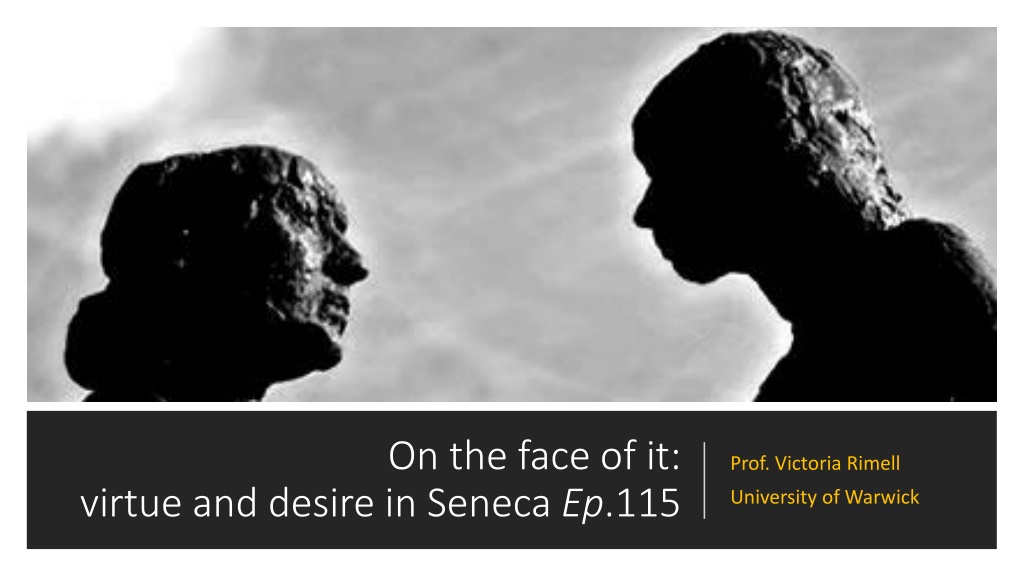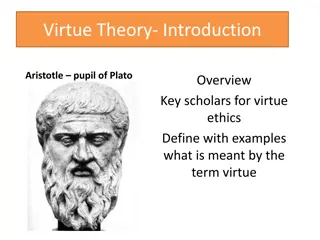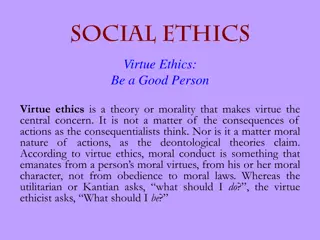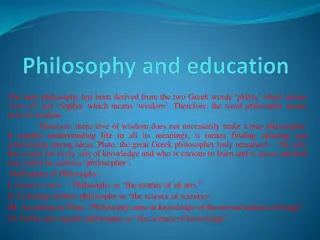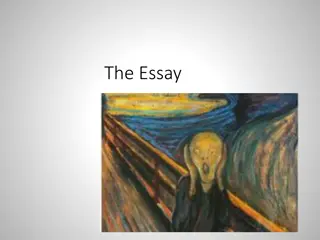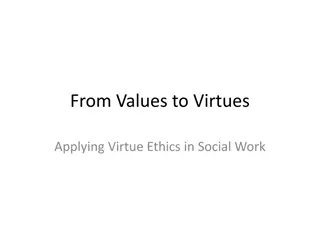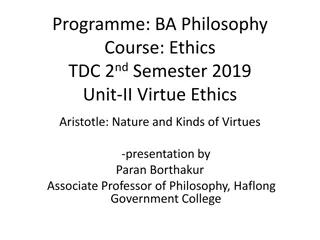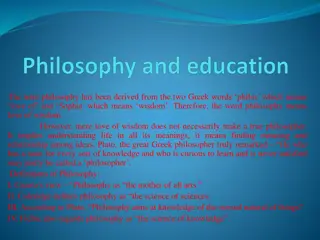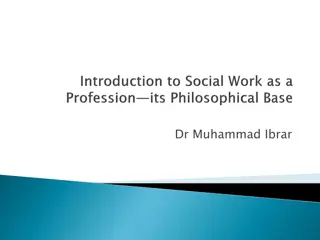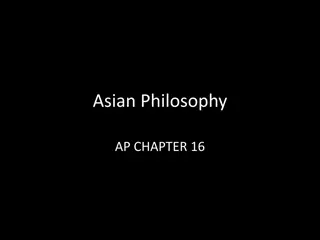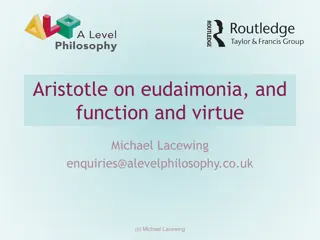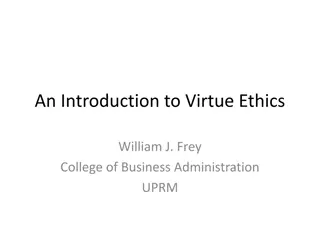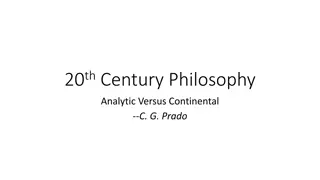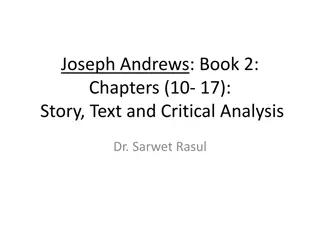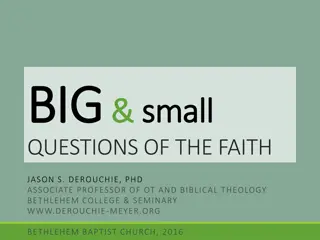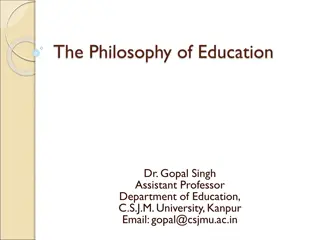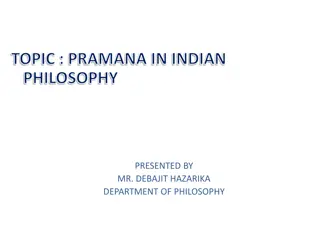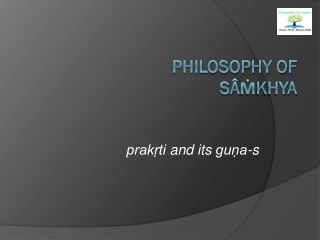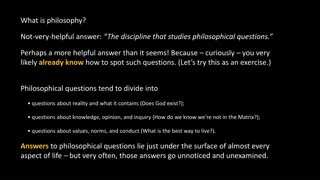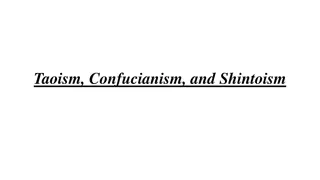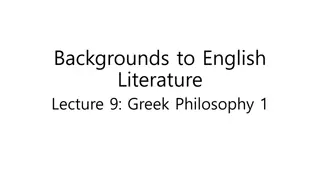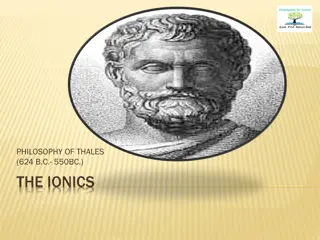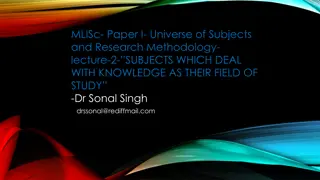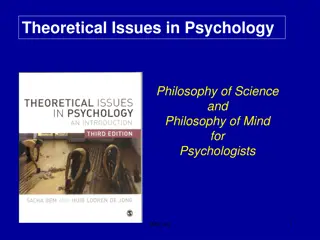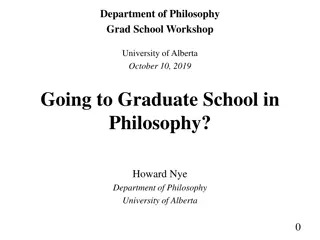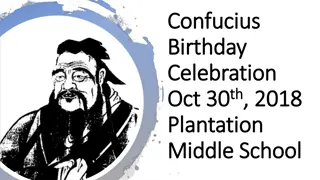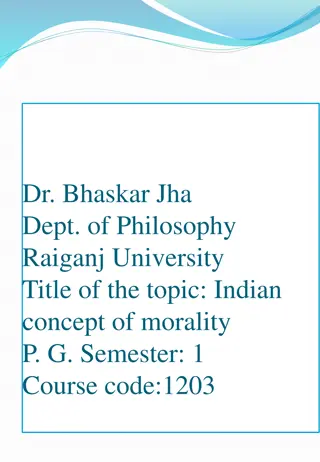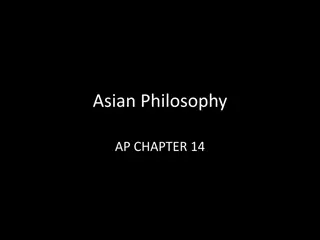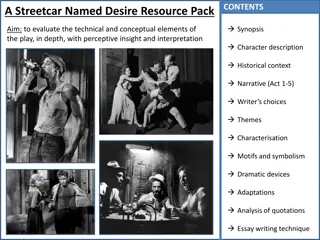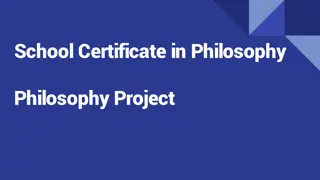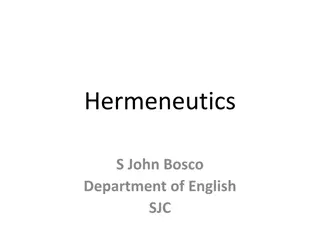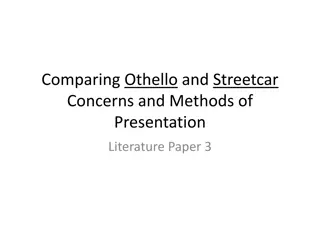Exploring Virtue and Desire in Seneca's Philosophy
Seneca presents a nuanced version of Stoicism, allowing for human interaction and love while emphasizing the purity of love separate from bodily desires. Through Seneca's writings, the distinction between love and desire is made clear, touching on themes of body, mind, desire, and veneration. The incorporation of poetry adds depth to the examination of passions, with an emphasis on feeling over writing. Elegance is explored as a non-manly ornament, contrasting with notions of excessive refinement. The text also delves into the concept of ornamentation in various contexts, from equipment and costume to literary embellishments. Seneca's passionate advocacy for virtue is highlighted as essential for inner beauty.
Download Presentation

Please find below an Image/Link to download the presentation.
The content on the website is provided AS IS for your information and personal use only. It may not be sold, licensed, or shared on other websites without obtaining consent from the author. Download presentation by click this link. If you encounter any issues during the download, it is possible that the publisher has removed the file from their server.
E N D
Presentation Transcript
On the face of it: Prof. Victoria Rimell virtue and desire in Seneca Ep.115 University of Warwick
Seneca seems to modify Stoicism slightly for his audience. [he] propounds a milder Stoicism, which allows the wise man human interaction and, therefore, love. However, love to Seneca is a very pure thing, completely separated from the desires of the body Seneca is clear on the difference between love and desire Barr, Cresswell, Thorley, OCR Classical Civilisation Love and Relationships, Seneca on love and desire
Body mind desire veneration Essentially a set-piece of Platonic provenance, Alex Dressler (2016) p.138 on Ep.115.3-4
Accedunt deinde carmina poetarum, quae adfectibus nostris facem subdant Ep.115.12 Verses of poets also are added to the account verses which lend fuel to our passions
Dont write, feel: 115.1 Quaere, quid scribas, non quemadmodum; Et hoc ipsum: non ut scribas, sed ut sentias, ut illa, quae senseris, magis adplices tibi et velut signes. You should seek what to write rather than how to write it and even that not for the purpose of writing but of feeling it, that you might make what you write your own and as it were put a seal on it.
Non est ornamentum virile concinnitas Elegance is not a manly ornament. Ep.115.3 Cf. Graver 1998, 615-16, Dressler 2016 p.137 Concinnitas as symmetry : cf. Cicero Brutus 325, Orator 149; or as excessive refinement , OLD 1a.
Equipment, costume, ornament, rhetorical- literary ornament, distinction Compare 115.3, 115.9 (parietibus aut lacunaribus ornamentum, decoration on walls and ceilings ) Ornamentum [orno + mentum] OLD, s.v. 1 ( equipment, accoutrements; esp. an animal s harness ) OLD, s.v. 6 ( distinction, honour ) Isid. Orig. 19.30.1: ornamenta dicta eo quod eorum cultu ora vultusque decorentur. ( ornaments are so named because one s face and appearance are adorned by wearing them )
115.3: passionate about virtue If we had the privilege of looking into a good man's soul, oh what a fair, holy, magnificent, gracious, and shining face (faciem) should we behold radiant on the one side with justice and temperance, on another with bravery and wisdom! And, besides these, thriftiness, moderation, endurance, refinement, affability, and though hard to believe love of one's fellow-men, that Good which is so rare in man, all these would be shedding their own glory over that soul. There, too, forethought combined with elegance and, resulting from these, a most excellent greatness of soul (the noblest of all these virtues) indeed what charm, O ye heavens, what authority and dignity would they contribute! What a wonderful combination of sweetness and power! No one could call such a face lovable (amabilem) without also calling it worshipful (venerabilem)
tunc deinde illam Vergilii nostri vocem verens atque attonitus emittat? O quam te memorem, virgo? namque haut tibi vultus mortalis nec vox hominem sonat . . sis felix nostrumque leves quaecumque laborem. Aeneid 1.327-8, Should we not, then, in reverence and awe, give utterance to that famous voice of Vergil By what name should I call you, maiden? For your face is not mortal, nor does your voice sound human Show grace to us, whoever you may be, and lighten this our burden. 330 [Ep.115.5]
Nemo, inquam, non amore eius arderet si nobis illam videre contingeret. Ep.115.6 Nobody, I tell you, would not burn with love for this (woman/Venus/virtue?)
O dea certe? O quam te memorem, virgo? namque haud tibi vultus mortalis, nec vox hominem sonat: o dea certe! Ep.115.5 / Virgil Aen.1.327-8
Themes to develop and discuss in the Letters Seneca s Stoic philosophy in dialogue, as a praxis, in the epistolary form Seneca in context : the letters, written in political retirement , are almost completely devoid of cultural-political coordinates. How Neronian are they? How do they deal with themes such as speaking frankly, deception, seduction, materialism as corruption, that have a political force in the early 60s? Letters as the cultivation of intimacy/friendship in the awareness of distance The (gendered) ethics of style/body language/dress The problem of desire: but what kind of desire?
More themes in the Letters and in Senecan Stoicism The difficult, non-linear learning journey of Stoicism, or becoming a Stoic Emotional regulation as we read Self-scrutiny, self-awareness and (counter-cultural) critical thinking as a key aspect of the Stoic life Mind vs/and body Autonomy vs. dependency: the inseparability of self-interest and the interests of others (oikeosis) in Stoic ethics. What does this mean for relationships, for a person s sense of self?
Do faces tell the truth in Senecas Letters and in Seneca s Rome? Is poker face a valid form of political resistance? [Compare e.g. Ad Polybium 5.4; also see De ira 2.33, Ep.11, Ep.66) What happens to relationships when we can t read faces, or when faces are deceptive or inauthentic? Discuss in relation to Aeneas and his mother, and Phaethon and his father, in Ep.115. How are parent-child relationships thematised here and elsewhere in the Letters (or performed in the Letters themselves, addressed to the younger Lucilius)? Love and Relationships: A key question for debate in Ep.115
References and further reading Bartsch, S. 2006. The Mirror of the Self. Sexuality, Self-Knowledge and the Gaze in the Early Roman Empire. Chicago. Bartsch, S. and Wray, D. eds. 2009. Seneca and the Self, Cambridge. Bartsch, S. and Schiesaro, A. 2015. The Cambridge Companion to Seneca, Cambridge Berno, F.R. 2016. Seneca al bivio. Il paradigma di Eracle nelle lettere 66 e 115 Prometheus 42: 115-22. Dressler, A. 2016. Personification and the Feminine in Roman Philosophy. Cambridge. Edwards, C. 1997, Self-scrutiny and self-transformation in Seneca s letters , Greece and Rome 44: 23-38 Edwards, C. 2019. Seneca: Selected Letters. Cambridge. Edwards, C. 2021. Looking for the emperor in Seneca s Letters in Giusti-Geue (eds.) Unspoken Rome, Cambridge, 165-84. F gen, T. 2009. Sermo corporis. Ancient reflections on gestus, vultus and vox in T. F gen and M.M. Lee (eds.) Berlin, 15-44. Graver, M. 1998. The manhandling of Maecenas. Senecan abstractions of masculinity TAPA 119.4: 607-32. Gunderson, E. 2015. The Sublime Seneca. Ethics, Literature, Metaphysics, Cambridge. Reydams Schils, G. 2005. The Roman Stoics. Self, Responsibility, Affection, Chicago. Rimell, V. 2015. The Closure of Space in Roman Poetics, Cambridge (chs. on Seneca) Schafer, J. 2011, Seneca s Epistulae Morales as dramatised education Classical Philology 106: 32-54. Starnone, V. 2020. Nessuno guarda Elissa. Due passi del primo libro dell Eneide e il disagio degli interpreti. Biblioteca di Materiali e discussioni per l'analisi dei testi classici 25.
